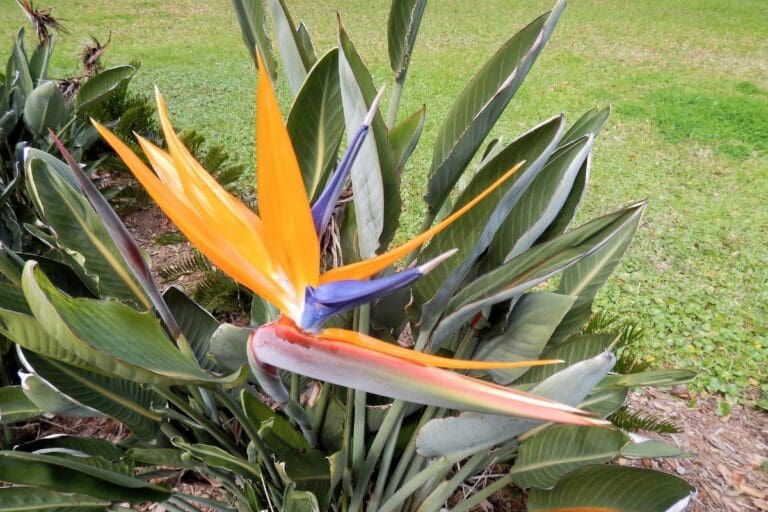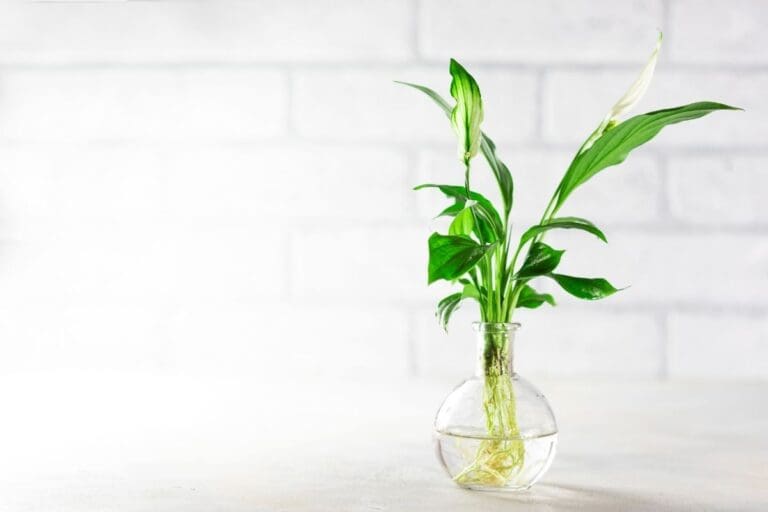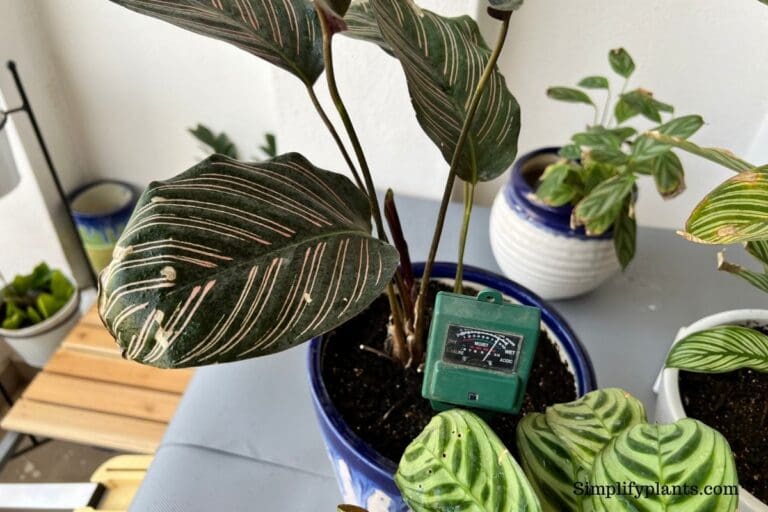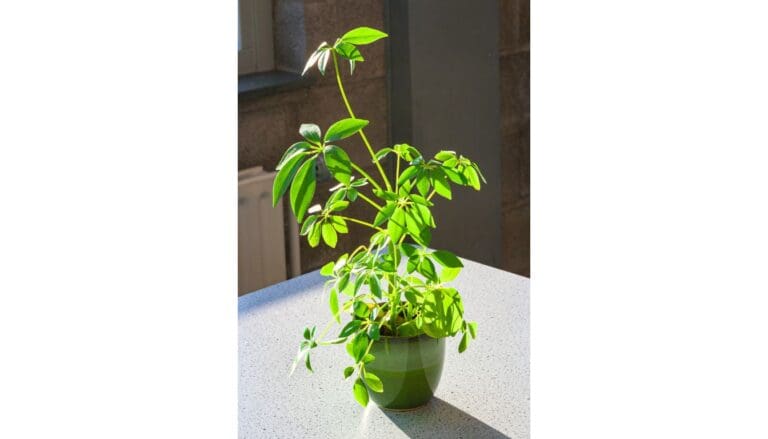Should you mist string of pearls? (+Humidity Guide)
The string of pearls is a succulent native to the arid regions of South Africa, where they get exposed to little rainfall and less humidity. Many plant owners like to mist their plants to increase the moisture and add water to the plant. But does the string of pearls enjoy humidity and misting? Let’s find out.
The string of pearls doesn’t like to be misted as they are succulents that originate from dry and warm climates. Misting your string of pearls can lead to severe problems like fungal infection and pest infestation. While propagating them, you can mist it lightly until it develops the root system.
Misting is not beneficial as these plants don’t enjoy sitting in water, and if the leaves remain wet for too long, it can give rise to other diseases. If you live in a dry and arid region and you need to increase the humidity, you can use other methods such as using a humidifier.
The string of pearls doesn’t need a lot of humidity like most other tropical houseplants. But you might need to increase the humidity if you live in the colder regions or during the winter months.
The string of pearls does well at a 40-50% humidity level, but if the levels go below that, you can use methods to increase some humidity around the plant.
You can use a hygrometer to keep a check on the humidity level of your house. We will discuss the humidity requirements and misting of your string of pearls in this article.

Please note: Simplify Plants is reader-supported. Some links in the post are affiliate links and I get a commission from purchases made through links in the post.
Should I mist my string of pearls?
Misting is one way of increasing the humidity for the plants. But whether you should mist your plant or not depends on the humidity requirement of the plant and if there is enough humidity inside the house.
Misting has a lot of advantages and disadvantages. Research shows that misting doesn’t always help the plant the way we expect.
If the air circulation is poor in your house and around your plant, misting can damage the plant as the water will stay on the leaves for too long and create an ideal environment for pest infestation and other plant-related diseases.
In a region where humidity levels drop below 40-50%, you would need to increase the humidity level, and there are many ways to do that other than misting the plant.
Misting might seem like an easy method of increasing the humidity, but it might not work well for your string of pearls. There is divided opinion about misting.
While some plant owners state that misting helps increase humidity and clean the leaves, some say that misting helps if you can do it every few minutes and can even cause pest infestation and damage the leaves.
When it comes to the strings of pearls, they don’t need a lot of humidity or watering as they are succulents, so misting might not be a practical method as it will have more downsides for these plants.
If you are propagating your string of pearls, you can mist the cuttings as they enjoy that till they develop roots. Once the cuttings have developed roots, they don’t need misting anymore.
We will find out some better ways to maintain the right humidity for the string of pearls in this article.
Do strings of pearls like humidity?

The string of pearls doesn’t have high humidity requirements. These plants can do well in average room humidity.
The string of pearls is from the dry regions of South Africa, where it doesn’t get a lot of humidity. So, it can adapt to low humidity environments.
As an indoor plant, they need an average room humidity level of 40-50%. There will not be any problem as long as the plant is getting that amount of humidity.
Let’s understand why humidity is so important for plants. When the humidity levels are low, the plants stops the transpiration process.
Transpiration is the process by which the plants use small holes below the surface of the leaves to exchange air from the environment.
Lack of transpiration hinders the growth and health of the plant. It affects photosynthesis, and the plant is unable to grow well.
When the humidity level drops below 30-40%, you should increase the humidity level. However, too much humidity can also impact the growth of the plants.
How to check the humidity level of your room?
Checking the humidity level of your house is essential, especially if you are a plant owner.
Using a hygrometer is the easiest way to check the humidity levels of the house. It is a small device that you can purchase online to measure the humidity of all the rooms.
Humidity levels will not be the same in all the rooms of your house. Some of the rooms, such as the basement, bathroom, or kitchen, will have more humidity than the bedroom or living room.
Other external factors such as climate, weather, temperature, and season can also play an essential role in determining the humidity level inside your house.
Checking the house’s humidity level will help you understand if your plants are getting enough humidity and if you need to do anything to add more humidity.
Signs your string of pearls need humidity
If your string of pearls lacks humidity, you will notice these signs in the plant.
- Shriveling pearls
- Brown leaves
- Leaves turn yellow
- Crisp and dry leaves
There might be other reasons for these problems, but if everything else is okay, you should check the humidity to make sure it is ideal for the plant.
How to increase humidity for your string of pearls?
The string of pearls generally does well in average humidity levels of 40-50%. However, if you live where the humidity level drops below 40%, you can use some methods to increase the humidity.
Using a humidifier is the easiest and most convenient way to increase the humidity levels inside the house.
You can also use a pebble tray which many plant owners suggest. Using a pebble tray doesn’t help in the long term but is still an efficient way of increasing the humidity levels.
Let’s take a look at the few ways of increasing humidity levels for your string of pearls.
Using a humidifier
Getting a humidifier is the most efficient way of increasing the humidity levels for the string of pearls.
A humidifier can help you increase the humidity level if you live in an area where the humidity levels drop below 40%.
Humidifiers add higher levels of humidity that can remain in the environment for a more extended period than most other methods.
You need to select a humidifier that goes with the room size. You can get great quality humidifiers online. It is both practical and affordable so consider investing in a good humidifier.
Group plants together

You may use this method if you have a lot of plants in your house. Grouping the plants and keeping them near each other is a good way of increasing the humidity levels.
Grouping helps to increase the humidity levels because of transpiration. Whenever the plants transpire, they release a certain amount of moisture into the air.
Thus, keeping the plants together helps increase the humidity levels in that area, but you can’t increase the humidity level much with this method.
It would be best if you do not place low humidity plants with the higher ones. You can group your succulents together for this to work.
Lower the room temperatures
Lowering the room temperatures can also help with the humidity levels.
You should remember that warm air retains less moisture, and cold air contains more moisture, considering the amount of moisture is equal in the air.
Lowering the room temperature makes the air colder, which can retain more moisture in the air.
Use a pebble tray
Using a pebble tray can add humidity to your plant and works better than misting.
To create a pebble tray, you need to take a tray, add some small stones or pebbles to it, and fill it with water.
You need to place the plant on top of the pebble tray so that the drainage holes are exposed to the water.
When the water evaporates from the pebble tray, it adds moisture around the plant and helps increase the humidity levels.
Add an aquarium
Having an aquarium helps increase the humidity levels inside the room. You can add a small or medium-sized aquarium, depending on the size of your room.
The humidity level of the room increases as the water evaporates from the aquarium and adds moisture to the air.
You can also use the water from the aquarium to water the plants as it is rich in nitrogen and contains other minerals that are beneficial for the plant.
Keep some bowls filled with water in the room
If you can’t keep an aquarium, you can place some bowls of water in the room instead.
Keeping some bowls of water works similarly to the aquarium and increases the humidity of the room. The water evaporates from the bowl and adds humidity to the room.
If you are using this method to increase the humidity, ensure proper ventilation in the room.
Final words
Living in a low humidity region requires you to increase the humidity for your string of pearls. You might want to increase the humidity levels even in the winter months. There are various methods to do it other than misting.
Misting doesn’t work well for all types of plants. The string of pearls is a succulent that doesn’t enjoy misting as it brings the risk of other problems.
You can mist the cuttings till the roots come out when you are propagating the plant.
Use a humidifier or a pebble tray, group it with other plants, or add an aquarium to increase the humidity levels for your string of pearls.
Ref: Wikipedia, Missouri Botanical Garden, University of Wisconsin.
Recommended Garden Supplies
| Product Image | Our Recommended Gardening Supplies | Check Offers! |
|---|---|---|
Top Top
Top
Top
Top
Top
Top
Top
Top | rePotme Houseplant and Tropical Classic Potting Soil Mix | Check Offer On Amazon |
 Top
Top
Top
Top
Top
Top
Top
Top | Espoma Organic Indoor Plant Food | Check Offer On Amazon |
 Top
Top
Top
Top
Top
Top
Top
Top | GooingTop LED Grow Light 6000K Full Spectrum Clip Plant Growing Lamp | Check Offer On Amazon |
 Top
Top
Top
Top
Top
Top
Top
Top | Soil Moisture Meter | Check Offer On Amazon |
 Top
Top
Top
Top
Top
Top
Top
Top | Govee Hygrometer Thermometer, Bluetooth Enabled! | Check Offer On Amazon |
 Top
Top | LEVOIT Humidifiers for Large Room(Best For Plants) | Check Offer On Amazon |
 Top
Top
Top
Top
Top
Top
Top
Top | Upgraded DIY Automatic Drip Irrigation Kit, 15 Potted Houseplants Support | Check Offer On Amazon |
 Top
Top
Top
Top
Top
Top
Top
Top | Stainless Steel Heavy Duty Gardening Tool Set | Check Offer On Amazon |
 Top
Top
Top
Top
Top
Top
Top
Top | Bonide Insecticidal Soap | Check Offer On Amazon |
 Top
Top
Top
Top
Top
Top
Top
Top | Bonide 32 oz Spray Neem Oil for Organic Gardening | Check Offer On Amazon |
 Top
Top
Top
Top
Top
Top
Top
Top | Garden Safe Fungicide | Check Offer On Amazon |









